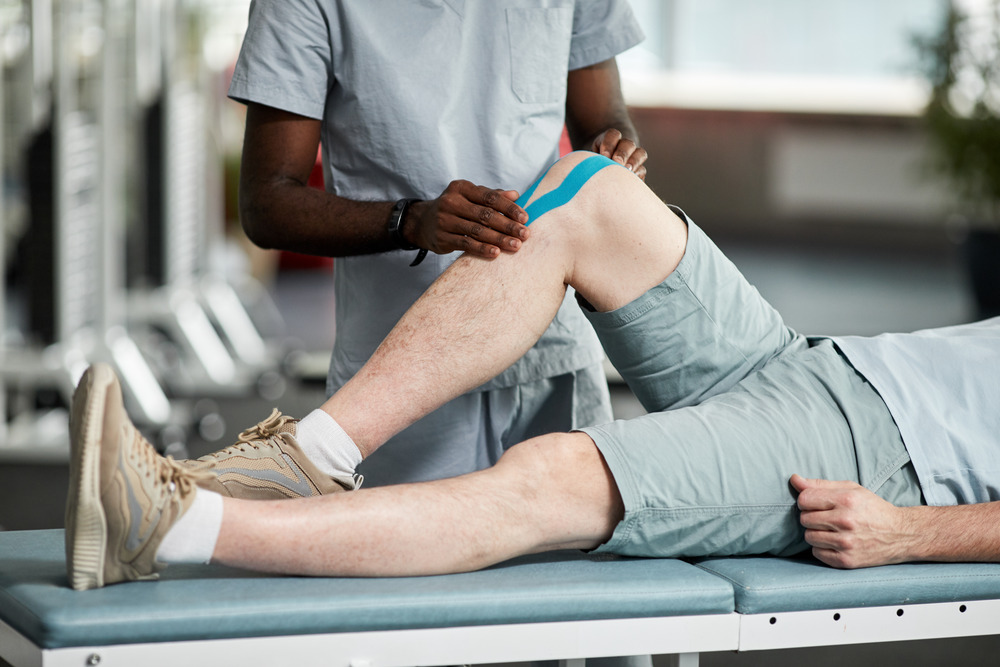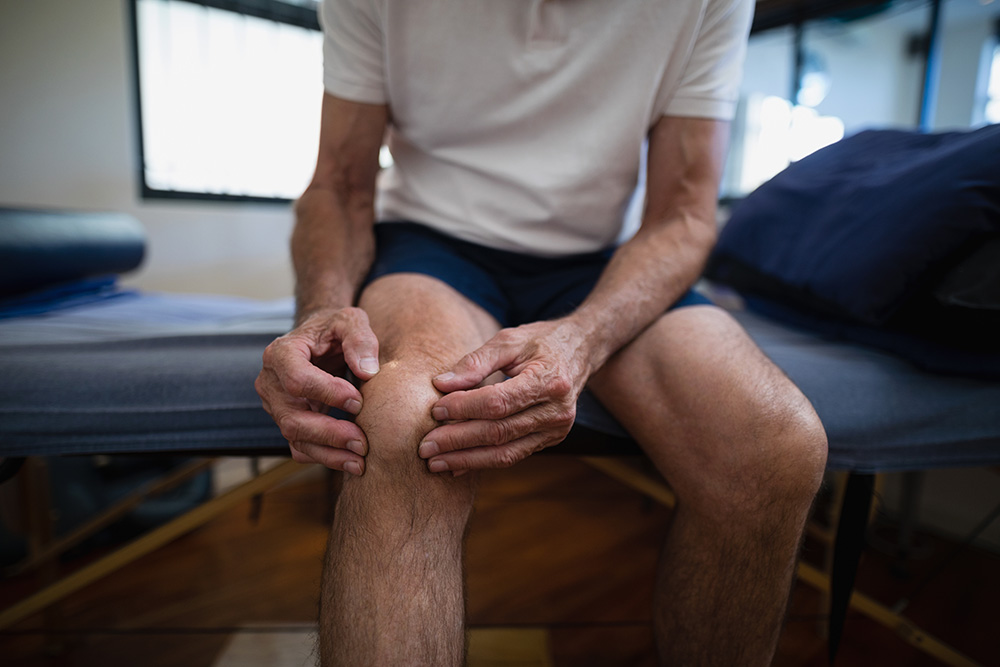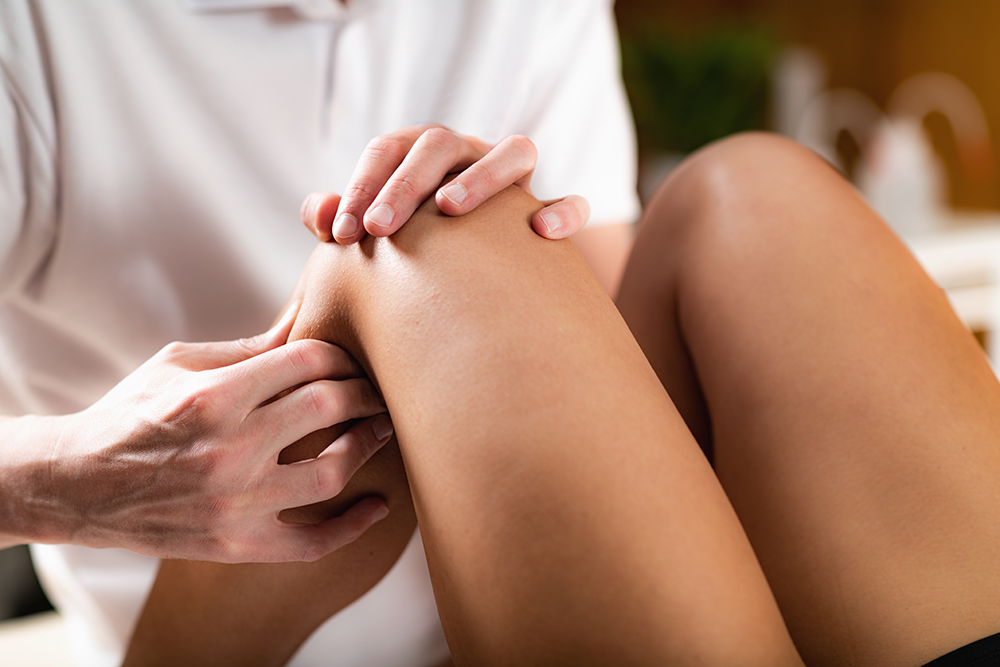Contents
Your knee joint is one of the largest and most complex joints in your body. It’s a hinge joint that allows you to bend and straighten your leg through the working relationship of the bones, muscles, ligaments, cartilage and tendons. Your knee is also responsible for bearing your body weight, especially when you walk, run or jump.
Knee pain is a common complaint, affecting children, athletes, adults and seniors alike. When your knee hurts when you bend it and straighten it, it can have a significant impact on your ability to do your daily activities and even your overall quality of life. If you’re experiencing knee pain specifically when bending and straightening, it’s crucial to know what the underlying issue is to help you get the appropriate treatment.
Symptoms of knee pain when bending it and straightening it
The specific symptoms of knee pain can vary depending on the underlying cause, but may include:
- Pain during bending or straightening — This can range from mild discomfort to a sharp, stabbing sensation. The pain may be located in the front or back of the knee.
- Swelling — The knee may look swollen or feel puffy due to inflammation.
- Stiffness — The knee joint may feel hard to move or bend smoothly.
- Clicking or popping — You may notice sounds from the knee joint when you move it.
- Instability — The knee may sometimes feel like it may give out or collapse.
- Locking — The knee may occasionally feel like it’s locked in place and won’t bend or straighten.
- Warmth — You may notice the knee feels warm to the touch.
- Redness — You may notice some redness in the skin around the knee.
Causes of knee pain when bending it and straightening it
Several conditions can cause knee pain when bending it and straightening it, including:
- Loose body — A loose body is a piece of cartilage or bone that breaks loose within the knee joint, causing pain when bending and straightening it.
- Referred pain — Sometimes, pain from another area, such as the hip or lower back, can be felt in the knee, making it painful to bend or straighten.
- Osteoarthritis — Osteoarthritis is a degenerative joint disease that causes the cartilage in the knee joint to wear down over time. As the cartilage deteriorates, the bones in the knee joint can rub together, causing pain, stiffness and swelling.
- Rheumatoid arthritis — Rheumatoid arthritis is an autoimmune disease that causes inflammation in the joints, including the knee. The inflammation can damage the joint lining and surrounding tissue, leading to pain, swelling and stiffness.
- Gout — Gout is a type of arthritis caused by a buildup of uric acid crystals in the joints. Gout can cause sudden, severe pain, swelling, redness and warmth in the affected joint, often the big toe but can also affect the knee.
- Jumper’s knee — Jumper’s knee, patellar tendinitis, is a condition that causes inflammation of the tendon that connects your kneecap, patella, to your shinbone, tibia. It’s common in athletes who participate in jumping sports like basketball and volleyball.
- Runner’s knee — Runner’s knee, patellofemoral pain syndrome, is a condition that causes pain around or under the kneecap. It’s often caused by overuse, muscle imbalance or poor alignment of the kneecap.
- Joint infection — Bacterial or fungal infections can infect the knee joint, causing severe pain, swelling, redness and warmth.
- Bursitis — Inflammation of the fluid-filled sacs, bursae, that cushion the bones, tendons and muscles around the knee joint is known as bursitis. Bursitis can make bending or straightening the knee uncomfortable.
- Fibromyalgia — Fibromyalgia is a chronic condition causing widespread pain, fatigue and tenderness in the muscles and joints. This pain can be a constant, dull ache, making movement uncomfortable.
- Knee injury — Knee injuries such as sprains, strains or ligament ruptures can cause pain when bending and straightening the knee. Pain may be present during bending or straightening, depending on the location of the knee injury.
- Tendinitis/tendinopathy — Inflammation of the tendons around the knee joint is known as tendinitis. The degeneration of the tendons around the knee joint is known as tendinopathy. Both conditions can cause pain that intensifies when bending and straightening the knee.
- Meniscus tear — The meniscus is a C-shaped disc that provides cushion in the knee joint. A tear in this cartilage causes pain when bending and straightening the knee, swelling, and a locking sensation in the knee joint.
- Baker’s cyst — A Baker’s cyst is a fluid-filled cyst that forms behind the knee joint and can cause pain behind the knee joint when you bend and straighten it. You may also feel a lump behind the knee.
- Chondromalacia — This condition causes the softening and deterioration of the cartilage under the kneecap, causing pain when bending, squatting or using the stairs.
- Deep vein thrombosis — Deep vein thrombosis is a blood clot that forms in a deep vein, often in the leg. The blood clot can cause swelling, warmth and pain in the knee and calf. This is a serious medical emergency and requires immediate medical attention.
Treatments for knee pain when bending and straightening it
Treatment for knee pain can depend on the cause, severity and duration of symptoms. General treatment approaches for knee pain when bending and straightening it may include:
- Rest and activity modification
- Heat and cold therapy
- Over-the-counter pain relievers
- Compression and elevation
- Bracing or support
- Physical therapy
- Corticosteroid injections
- Surgery, in severe cases
Physical therapy techniques for knee pain relief
Physical therapy is often recommended as an effective, noninvasive way to treat knee pain when bending and straightening it. Here are some physical therapy techniques your physical therapist may incorporate in your personalized treatment plan:
- Aquatic therapy — Aquatic therapy takes place in a warm pool where the buoyancy of water reduces the body’s weight, relieving pressure on the knee joints. Aquatic therapy allows exercises that may otherwise be painful or challenging on land by lessening joint stress. The warm water also helps soothe muscles, increase blood flow and reduce pain.
- Manual therapy — Manual therapy encompasses a wide variety of hands-on therapeutic approaches intended to improve joint mobility, reduce muscle tension and alleviate pain, including:
- Joint mobilization — Joint mobilization is a hands-on technique where your physical therapist applies slow, controlled movements to the knee joint. These small movements can help improve the knee’s range of motion by stretching the connective tissue, reducing stiffness and promoting flexibility.
- Joint manipulation — Joint manipulation is a more advanced technique that involves quick, forceful movements to restore knee alignment and improve its function. During joint manipulation, your physical therapist will apply a quick, precise movement to relieve joint stiffness, which may create a “popping” sound as the joint releases pressure. This technique can relieve pain, reduce muscle tightness and promote more natural knee movement.
- Trigger point therapy — Trigger point therapy focuses on relieving tension in specific “trigger points” or tight spots in the muscles around the knee. These tight areas can refer pain to the knee, causing discomfort during bending or straightening. Your physical therapist will apply steady pressure to these points, releasing muscle knots and restoring blood flow. This technique can help improve flexibility, reduce pain and promote relaxation in the surrounding muscles.
- Soft tissue manipulation — Soft tissue manipulation involves hands-on techniques to massage and stretch the muscles, tendons and ligaments surrounding the knee. Your physical therapist will use varying pressures and strokes to release tension, improve circulation and boost mobility.
- Therapeutic ultrasound — Therapeutic ultrasound is a technique that uses high-frequency sound waves to penetrate deep into the tissue around the knee. These sound waves produce gentle vibrations and heat that stimulate tissue repair, reduce inflammation and increase blood flow. The warmth created by the ultrasound device helps relax tight muscles and encourage healing at a cellular level, allowing for quicker recovery and reduced pain.
- Electrical stimulation — Electrical stimulation involves your physical therapist applying small electrodes around the affected area. These electrodes deliver small electrical pulses to the muscles around the knee, helping stimulate muscle contraction, improve blood flow and reduce pain signals to the brain.
Each of these techniques plays a valuable role in managing knee pain when bending and straightening it and improving function. Physical therapy provides a personalized and supportive approach, allowing you to work on strength, flexibility and mobility in a controlled and safe environment. If you’re struggling with knee pain when bending or straightening, these methods offer a holistic and effective path to recovery.
Lattimore PT can help you on your journey to knee pain relief
At Lattimore Physical Therapy, we understand how challenging knee pain can be, especially when it disrupts your ability to bend, straighten and move comfortably. Our approach to knee pain combines proven physical therapy techniques with compassionate, comprehensive care tailored to your unique needs. Our goal is to support your recovery and restore your knee’s natural movement. We’re here to help you regain mobility, reduce pain and get back to enjoying your life with a personalized plan that prioritizes both your healing and long-term wellness goals. At Lattimore PT, we’re with you every step of the way on your journey to knee health.
Contact our team today for more information or to schedule an initial appointment.



